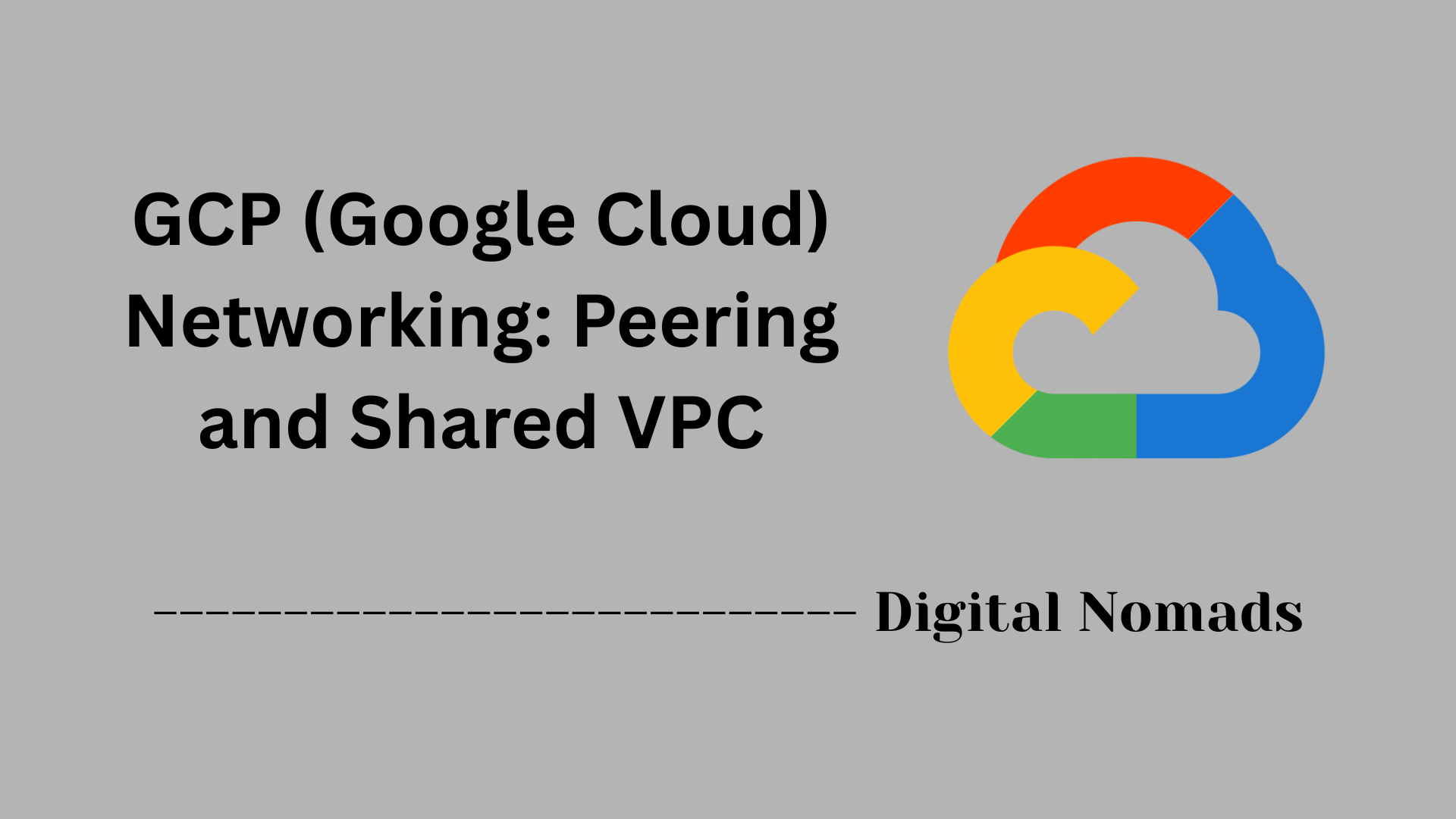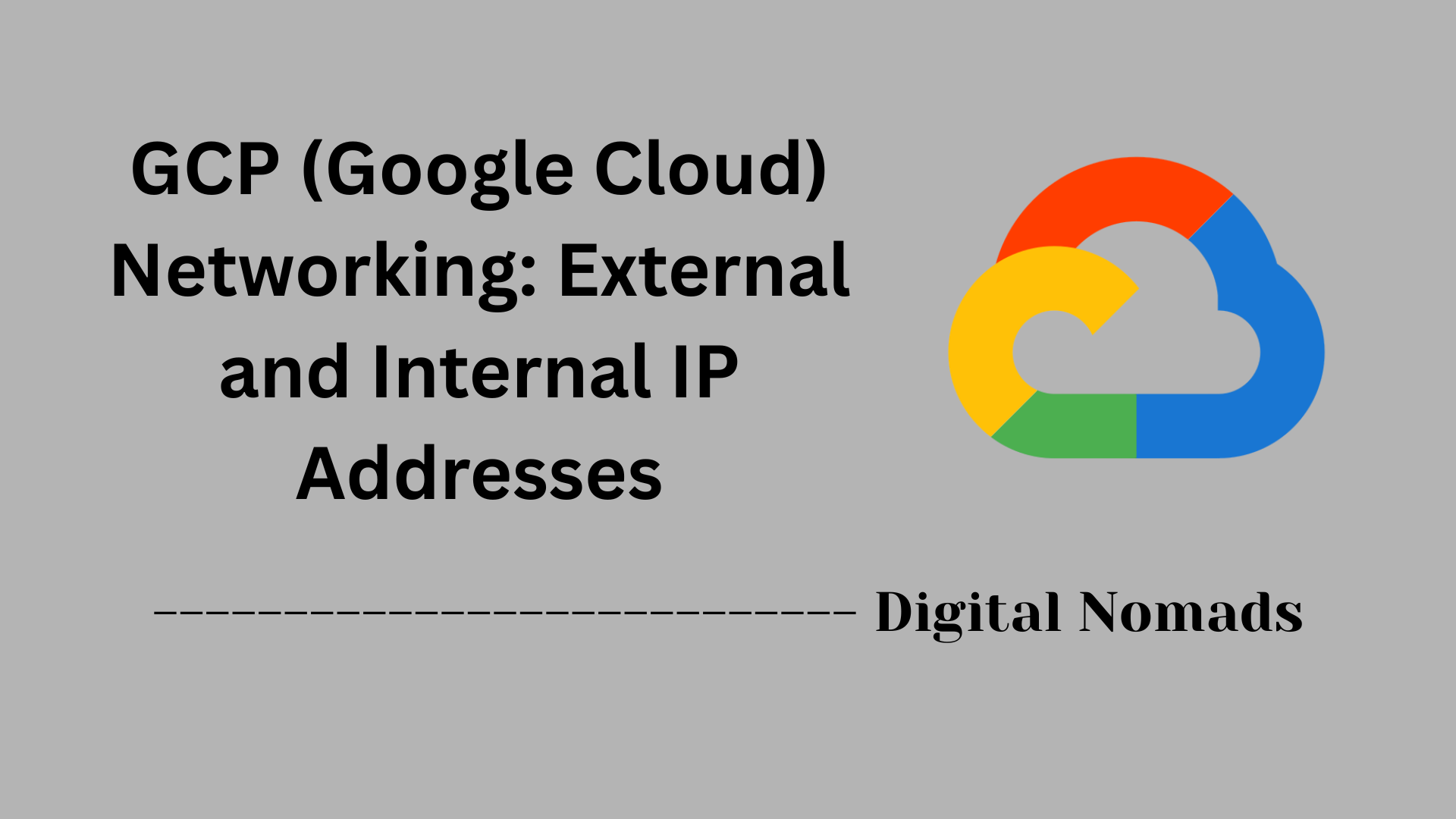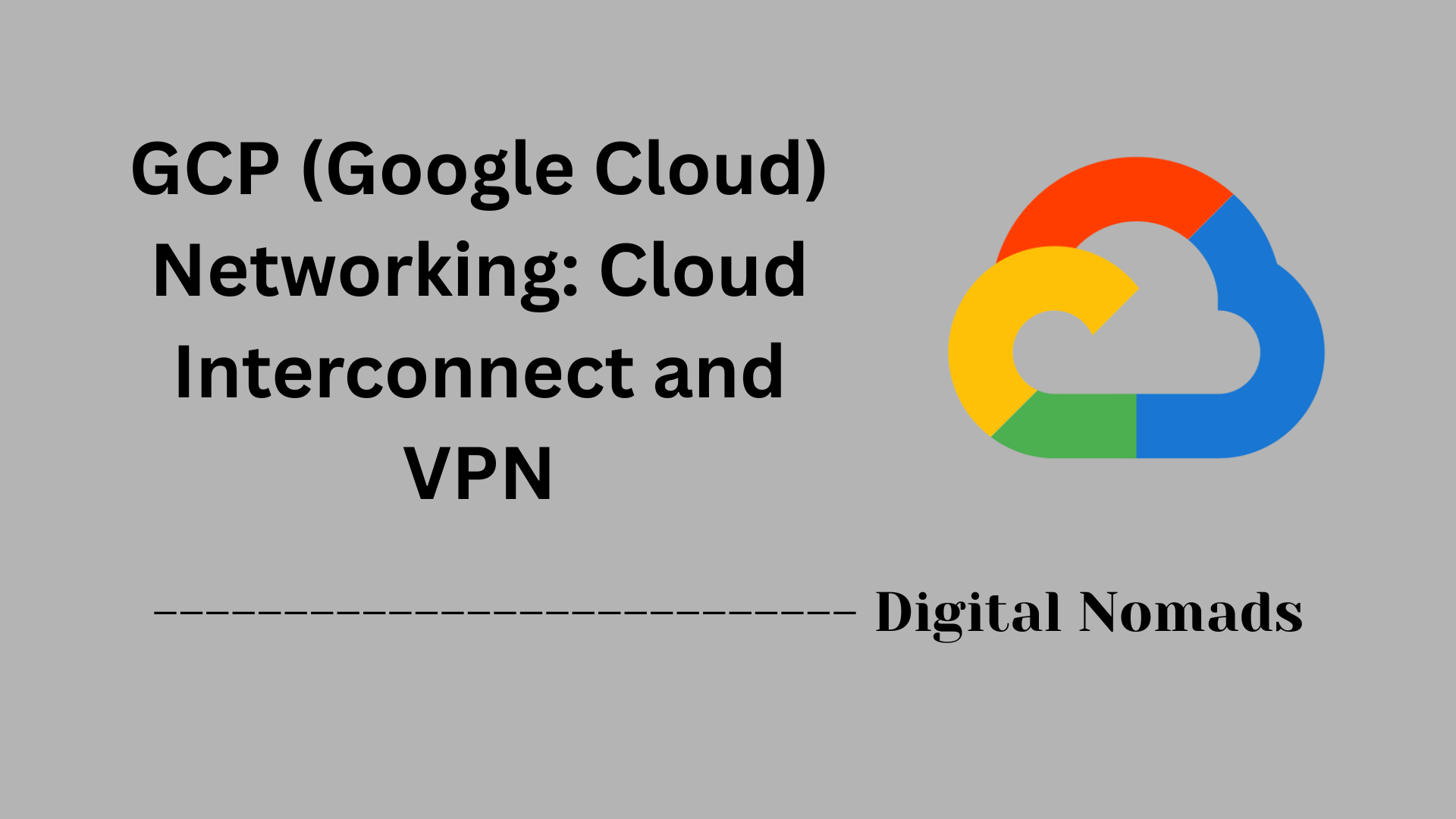Table of Contents
- Overview
- Types of Google Cloud Load Balancers
- Benefits
- Best Practices
- Monitoring and Troubleshooting
- Conclusion
GCP Networking: Cloud Load Balancing – Overview
What Is Google Cloud Load Balancing?
Google Cloud Load Balancing is a fully managed, highly scalable service that automatically distributes incoming user traffic across multiple computing resources in Google’s global cloud platform. It provides both global and regional load balancing to support a variety of protocols and application architectures. With Cloud Load Balancing, applications can remain available, responsive, and secure—even in the face of huge traffic spikes or sudden backend failures.
Why Do You Need to Know About It?
- Powerful Scalability: It enables applications to scale seamlessly, handling everything from small workloads to global surges in demand without any manual intervention.
- High Availability: Load balancing improves uptime by distributing traffic only to healthy resources and automatically rerouting around failures.
- Performance Optimization: Traffic is intelligently routed based on location, resource health, proximity, and user-defined rules, resulting in lower latency and better user experience.
- Simplicity and Automation: GCP manages the load balancer, automatically scaling and updating as needed—so you don’t have to worry about infrastructure limitations or pre-warming.
- Security: Google Cloud Load Balancing supports SSL/TLS termination, integrates with security tools like Cloud Armor, and defends against DDoS attacks.
How Does It Work?
- Traffic Distribution: When a user makes a request—such as visiting a website or accessing an API—the load balancer receives that request and decides which backend resource should handle it. Criteria include resource availability, geographic proximity, health, and load.
- Single Anycast IP: For global services, GCP provides a single, worldwide anycast IP address. This address routes traffic to the nearest healthy backend, reducing latency and simplifying DNS management.
- Health Checks: Cloud Load Balancing constantly checks the health of each backend resource. Only healthy instances receive traffic; unhealthy ones are bypassed automatically until they recover.
- Types & Flexibility: There are multiple types of load balancers on GCP—HTTP(S), TCP/UDP, Proxy, and internal-facing—for different protocols and deployment scenarios.
- Autoscaling and Integrations: The service automatically scales up or down as load changes and tightly integrates with Google Cloud services like Cloud CDN (content caching), Identity-Aware Proxy, and Google Cloud Logging/Monitoring.
Types of Google Cloud Load Balancers
Google Cloud offers various load balancer types to meet different application, network, and security requirements. Each type is tailored for specific use cases, protocols, and scales. Here’s an overview of the main types:
- External HTTP(S) Load Balancer: Designed for global or regional web services, this load balancer handles HTTP and HTTPS traffic and provides a single anycast IP address for backend services distributed worldwide. It supports content-based routing and integration with Cloud CDN for improved performance.
- Internal HTTP(S) Load Balancer: Used within a Virtual Private Cloud (VPC), it enables HTTP and HTTPS load balancing for applications accessed privately, ideal for microservices or APIs that do not need public internet exposure.
- External TCP/UDP Network Load Balancer: Best for non-HTTP(S) workloads (such as SMTP, FTP, DNS) requiring high performance and low latency. It distributes TCP or UDP traffic regionally and can scale to millions of requests per second.
- Internal TCP/UDP Load Balancer: Provides regional, private load balancing over TCP or UDP within a VPC. It’s suitable for internal applications like databases or private enterprise services.
- SSL Proxy Load Balancer: Optimized for secure, global SSL traffic. It offloads SSL termination from backend instances and is used for workloads requiring encrypted, proxy-based TCP connections.
- TCP Proxy Load Balancer: Handles non-SSL TCP traffic at the global or regional level, providing advanced traffic management, connection draining, and health checks for TCP workloads.
| Type | Scope | Protocols | Example Use Cases |
|---|---|---|---|
| External HTTP(S) | Global / Regional | HTTP, HTTPS | Web applications, APIs, SaaS platforms |
| Internal HTTP(S) | Regional | HTTP, HTTPS | Private internal services, microservices |
| External TCP/UDP Network | Regional | TCP, UDP | Non-HTTP(S) services: DNS, SMTP, FTP |
| Internal TCP/UDP | Regional | TCP, UDP | Internal databases, backend services |
| SSL Proxy | Global / Regional | SSL over TCP | Secure TCP traffic needing SSL offload |
| TCP Proxy | Global / Regional | TCP | General TCP workloads, gaming backends |
Tip: Choose a load balancer based on protocol (HTTP/HTTPS vs. TCP/UDP), where your users are located (global vs. regional), and whether the service should be accessible publicly or only within a VPC.
Benefits
Google Cloud Load Balancing provides a powerful, fully managed solution to help deliver your applications with speed, reliability, and scale. Whether you're running internet-facing services or internal systems, these benefits enable performance and operational excellence:
- Global Load Distribution: Balance traffic across multiple backend regions using a single anycast IP address, improving availability and latency for users around the world.
- Auto Scaling and Flexibility: Automatically scales backend instances up or down based on traffic demand—no pre-warming required.
- Health Check Integration: Continuously monitors the health of backend services and reroutes traffic away from unhealthy instances to maintain uptime.
- Seamless SSL/TLS Termination: Secure your applications while offloading encryption overhead from backend instances. Managed certificates simplify SSL deployment.
- Layer 7 Intelligent Routing: Content-based routing on URL path, host, or header values allows for smarter request handling and deployment strategies.
- Private and Public Load Balancing: Easily configure internet-facing or internal-only load balancers to isolate or expose services as required by your architecture.
- DDoS Protection and Security: Built-in defense against volumetric attacks with seamless integration into Google Cloud Armor for application-level protection.
- Logging, Monitoring, and Insights: Gain full visibility into traffic patterns and backend performance via integration with Cloud Logging, Monitoring, and Metrics Explorer.
Bottom Line: Google Cloud Load Balancing simplifies infrastructure, speeds up deployment, and ensures your applications remain accessible and responsive under any load condition.
Best Practices
Implementing Google Cloud Load Balancing effectively requires configuring, securing, and monitoring the service according to proven best practices. These guidelines help ensure performance, availability, and cost-efficiency across your applications and network infrastructure:
- Select the Appropriate Load Balancer Type: Choose the load balancer (external/internal, HTTP(S)/TCP/UDP, regional/global) that matches your application’s traffic patterns and user locations.
- Distribute Backends Across Regions: Deploy backend resources closer to your users in multiple regions to reduce latency and improve service availability.
- Leverage Managed Instance Groups: Use Managed Instance Groups (MIGs) for your backends to enable autoscaling and automated recoveries in response to varying traffic loads.
- Enable Health Checks: Set up health checks for backend instances to automatically route traffic away from unhealthy or unreachable endpoints.
- Integrate with Cloud CDN: For HTTP(S) workloads, enable Cloud CDN to cache content at Google’s edge locations, enhancing speed and reducing origin server load.
- Establish Firewall Rules: Protect backend systems by restricting traffic only to trusted networks and required ports through precisely scoped firewall rules.
- Secure with SSL/TLS and Policies: Use SSL certificates for encrypted traffic, enforce the use of secure ciphers, and restrict to HTTPS wherever possible. Utilize managed certificates for easier lifecycle management.
- Monitor and Enable Logging: Activate logging and monitoring for your load balancers to visualize traffic patterns, detect anomalies, and support troubleshooting.
- Review Configuration Changes: Regularly audit configuration changes to catch misconfigurations early and ensure compliance with organizational policies.
- Optimize for Cost and Performance: Regularly analyze usage and adjust scaling, backend locations, and policies to align with both cost objectives and application requirements.
Pro Tip: Always test changes in a controlled environment and benchmark your application after any configuration updates to ensure optimal performance and reliability.
Monitoring and Troubleshooting
Monitoring and troubleshooting are critical to ensure that applications using Google Cloud Load Balancing stay healthy, responsive, and secure. This section outlines best practices and key steps for ongoing visibility and effective problem resolution.
- Enable and Use Cloud Monitoring Dashboards: Leverage Google's pre-built dashboards or create custom ones to visualize traffic patterns, backend health, response times, error rates, and latency. Regular dashboard reviews help detect issues early.
- Set Up Alerting Policies: Configure alerts to notify your team about critical events such as high error rates, backend health status changes, or sudden traffic spikes. Make sure notifications reach stakeholders via preferred communication channels.
- Log Integration for Deep Insights: Enable logging on your load balancers to capture detailed request and response data. Analyze logs to track down root causes for anomalies, failed requests, or unexpected behaviors.
- Monitor Key Health Metrics: Track metrics like request count, latency (total, backend, and frontend), request/response byte volume, and HTTP response code distributions. Monitoring these over time provides insights into normal patterns and potential performance bottlenecks.
- Troubleshoot Unhealthy Backends: If a backend is marked unhealthy, check health checks, network connectivity, instance configurations, and application-level responses. Use the Google Cloud Console’s diagnostic tools to test connectivity and configuration.
- Check Configuration Changes: Audit recent configuration updates when issues arise, including firewall rules, backend groups, or SSL policies, as misconfigurations are a common root cause for downtime.
- Use Diagnostic Tools: Utilize built-in tools to test reachability, view live logs, and simulate loads to ensure that changes haven’t introduced new issues.
- Review and Respond to Incidents: Regularly review incidents and system-generated alerts. Document resolution steps for future reference and continuous improvement.
| Monitoring Focus Area | Best Practice |
|---|---|
| Dashboards | Create and review dashboards regularly to track real-time health and traffic. |
| Alerting | Set thresholds and configure alerts for timely issue detection. |
| Logging | Enable and analyze logs for visibility into requests, errors, and detailed troubleshooting. |
| Backend Health | Monitor health checks and respond proactively to unhealthy backend notifications. |
| Configuration Changes | Review recent changes if problems are detected; use audit logs for traceability. |
| Incident Response | Have a documented process for investigating and resolving load balancing incidents. |
Final Thought: Consistent monitoring, actionable alerting, proactive diagnostics, and swift troubleshooting ensure that your Google Cloud Load Balancer setup maintains the high availability and performance your applications demand.
Conclusion
Throughout this blog post, we've explored the powerful capabilities of Google Cloud Load Balancing and how it plays a central role in building scalable, reliable, and secure cloud-native architectures. Whether you're operating high-traffic public web applications or managing internal services at scale, understanding and implementing GCP’s load balancer options can significantly elevate your infrastructure performance.
🔑 Key Takeaways:
- Types of Load Balancers: GCP offers flexible options for load balancing traffic both inside and outside your network, including HTTP(S), TCP/UDP, SSL, and proxy-based solutions.
- Benefits: Google Cloud Load Balancing delivers high availability, automatic scaling, security, and global performance—all managed as a service to reduce operational overhead.
- Best Practices: Choosing the right load balancer type, configuring health checks, using autoscaling, integrating with firewall rules, and enabling logging are essential for an effective setup.
- Monitoring & Troubleshooting: Troubleshooting is greatly streamlined with integrated logging, health metrics, diagnostics tools, and monitoring dashboards that provide real-time visibility into your system's behavior.
By applying these principles and practices, you can ensure that your applications remain resilient, fast, and secure regardless of where your users are coming from or how traffic grows over time.
Thanks for following along! We hope this guide helped you gain a clearer understanding of Google Cloud Load Balancing and how to make the most of it in your cloud journey. Happy building in the cloud! 🚀🌐




